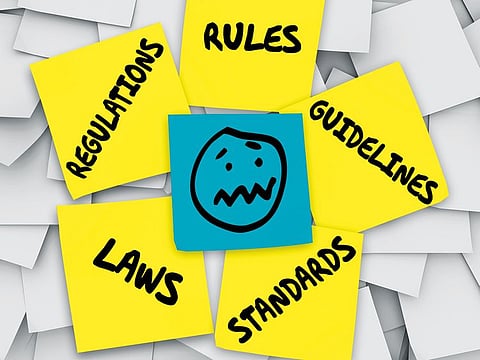There are no definite rules in making a market intervention
The ‘too big to fail’ argument for government-led help needs to be applied selectively

In recent weeks, the headlines have been dominated by Abraaj and the Drake and Scull International (DSI) affairs. Most commonly, these have been sighted as examples of regulatory failures and the need for regulatory reform in the wake of these incidents.
While there can and always will be lessons learnt from any company failures, the broader context to scrutinise are the lessons learnt from the incidents themselves and how competing regulatory jurisdictions have conducted themselves in times of company failures.
“Pareto efficient” outcomes only occur under certain situations with individuals. Regardless of accounting rules and market oversight, managers of companies always have an incentive to obfuscate and indulge in practices that are risky/mala fide, especially given the information asymmetry that will always be present.
In a capitalistic system, this is the natural outcome of events, and part of the “feedback loop” that is the dark side of innovation. Structures that encourage entrepreneurship and company formation will also have externalities in the form of company failures, some of which are not attributable to just market conditions.
This is commonly known as a moral hazard. In these times, the job of the regulator is the least enviable: no one can be made better off without making someone else worse off. Shareholders have to bear the brunt of the declines, but there are other negative consequences such as job cuts, loss of confidence etc, that trigger a cascade effect throughout the economy that innocent bystanders are forced to accept.
In the Western world, the crisis of 2008 led to regulators intervening by pumping in massive amounts of capital to shore up ailing financial companies by effectively nationalising a few of them after the Lehman Brothers collapse was allowed to take place. This decision was taken in the broader interest of the global financial system, and even though the world plunged into a recession, economists now broadly concede that the set of decisions was the right one.
This of course presents another moral hazard, whereby shareholders always expect to be bailed out by the government every time an institution is on the verge of collapse, a situation that is clearly implausible. In the cases of Abraaj and DSI, no regulatory intervention was taken clearly because the companies were not considered “too big to fail”, thereby prompting grumblings about the nature of the regulatory regime.
Herein lies the conundrum that exposes both the asymmetric nature of regulatory responses to market failures as well as the nature of risk taking in an innovative economy. The most sophisticated regulatory regimes could not prevent the collapse of Lehman Brothers, and could only prevent further failures through massive infusions of capital to other firms.
In the case of Abraaj, such as a potential outcome was taken away from the domestic regulator’s hands through the actions of the US District Attorney, and in the case of DSI, the suspension of the shares on the domestic bourse for failure to disclose financial results in a timely manner did not prevent the abuse of accounting regulations that have since then been uncovered.
The design of regulatory systems have to take into account not only information asymmetry, since the regulator will always be at an informational disadvantage relative to the regulated, but also moral hazard and human fallibility since mistakes are inevitable.
The empirical record suggests that no such regulatory regime exists and intervention has always been justified on the grounds that the costs of intervention will be lower than the cost of sitting aside. The level of intrusion therefore implies perversely that greater the track record of intervention, the greater will be the incentive to indulge in reckless behaviour, since there is always an expectation for companies to be bailed out.
There is no easy answer to determine whether a failure of a company will be systemic (lead to a cascade effect throughout the economy). The only sensible approach is to advocate for an interdisciplinary “financial safety oversight board” that interacts with the regulators and the regulated alike, so as to reduce information asymmetry and focuses on the shareholders and employees such that broader social objectives are taken into account.
To be sure, this approach has not been implemented anywhere and there is no guarantee that this provides a fail-safe mechanism. Market failures are a common feature of a capitalist economy, and dissatisfying as it sounds, is the only way that innovation can be nurtured.
Regulatory reform will always be taken in small steps, but by its very nature will never be one where everyone wins. That is the fundamental nature of risk, and to avoid the negative consequences of risk taking will lead to further distortions.
All regulators can do is to reduce the bridge of information asymmetry that exists, and this navigational framework is one that will continue to dominate the discourse in the years to come.
Sameer Lakhani is Managing Director at Global Capital Partners.
Sign up for the Daily Briefing
Get the latest news and updates straight to your inbox



